DigitalFUTURES Young Award 2023


Tom Svilans is an architectural designer, consultant, and researcher, focusing on digital fabrication, materiality, and computational design modelling. Tom is currently an Assistant Professor at CITA (Centre for IT and Architecture) at the Royal Danish Academy in Copenhagen, Denmark. His research focuses on digital design across the timber value chain – from forestry to construction – and methods of integrating new imaging and information-communication technologies in the design and fabrication of engineered timber elements. As a consultant, he specializes in the computational modelling, design development, and fabrication coordination of complex timber structures. Tom holds a PhD from the Royal Danish Academy as part of the EU-funded InnoChain research network. He is currently part of the ERC-funded Eco-Metabolistic Architecture (EMA) research project at CITA. He has presented and published his work internationally, and has taught at a number of academic institutions, among them the Bartlett School of Architecture, UCL; the Architectural Association (AA); the Institute for Advanced Architecture of Catalonia (IAAC); and the Royal Danish Academy.


Alexandre Dubor is an architect and researcher that explores the potential of new technology, materials and designs for a better construction industry, with a focus on 3D printing and robotics for a sustainable architecture. Trained as architect and engineer (March. at ENSAVT / ENPC, March. at IAAC), he has experience in architectural offices (Studio Libeskind, Atenastudio, iDonati, AREP and Appareil), software development (C277), research and teaching (UTS, IAAC). Since 2012, he has been working at IAAC where he now lead the AAG fabrication team, direct the postgraduate in 3D Printing Architecture (3DPA) and direct the Master in Robotics and Advanced Construction (MRAC)


Dr Nic Bao is a Lecturer in Architecture and PhD supervisor at RMIT University, specializing in performance architecture, computational design, structural optimization, behavioural algorithms, additive manufacturing, and robotic fabrication. He has published over 40 articles and serves as an editorial board member of Architectural Intelligence and Sustainable Structures journals. Nic is an Australian and US Registered Architect, and UK RIBA Chartered Architect. He is the director of B+W Architects and Wonderform Studio, co-founder of FormX and partner at Ameba. His work has been exhibited at DigitalFutures, Melbourne Design Week, Venice Biennale, Shenzhen Biennale and IASS Expo, etc. Nic received his PhD in Civil Engineering and Architecture with the Research Excellence and Impact Award and Prize from RMIT, where he gained Bachelor of Architecture. He also holds a Master of Architecture from the University of Melbourne. Nic has been the recipient of numerous awards, including Young CAADRIA Award, MUSE Design Award, GPDP Gold Award, IAI Design Award, A'Design Award, etc. Nic is also an officer and chair of awards at CAADRIA, a committee member of the Australian Institute of Architects and DigitalFutures Association, and a key organizing committee member of the IASS 2023 Symposium. He was also invited as a guest lecturer and critic at Tongji University, Universita Di Pisa, Tsinghua University, Shenzhen University, The University of Newcastle, UCL Bartlett, ETH Zurich, Southeast University, University of Michigan, etc.


Diego Pinochet is an internationally awarded architect, computational designer leader, and innovator. He has been a researcher and educator for over a decade in the United States and Chile. He is currently a Senior Computational Designer at Samsung Research America, where he is leading the integration of design and artificial intelligence to boost the future of product design and user experience. Dr Pinochet holds a Ph.D. in Machine Learning and Robotics from the Massachusetts Institute of Technology, as well as a Master of Science in Design and Computation from the same institution. His work focuses on design intelligence and interactive fabrication, using computation to amplify the creative potential of design through technology. He has developed innovative design methodologies for human-machine interaction based on gestures and artificial intelligence. He has taught at MIT and is currently a Professor at the Design Lab at UAI Chile. His work has been awarded, exhibited, and published in countries around the world, including Hong Kong, China, Japan, Austria, the United States, Italy, Argentina, Spain, and Australia.


Hao Wu is a PhD candidate in Architecture at Tongji University, specializing in structural performance-based design, computational design, design for additive manufacturing, 3D concrete printing simulation, and robotic fabrication. He has published 7 articles in international conferences and high-impact journals. He won Young CAADRIA Award and Best Paper Award-Runner Up in Caadria2023. He was the co-leader of several digital design and fabrication workshops, including RMIT-Tongji joint studio Intelligent Force Printing (2021), DigitalFUTURES2022 AI Augmented Design and Robotic Fabrication (2022). He holds a Bachelor of Architecture from South China University of Technology, where he also gained a degree in historic building preservation.
DigitalFUTURES Young Award 2022
Hua Chai
Hua Chai is a Postdoctoral researcher at the College of Architecture and Urban Planning (CAUP) of Tongji University. His research focuses on the computational design and robotic fabrication of timber structures, with a special attention on advanced robotic production technologies for complex timber building systems. He received his Ph.D. from Tongji University in 2022. He visited the Institute for Computational Design and Construction (ICD) at the University of Stuttgart for one year as guest researcher in 2020. His research has been widely published in journals and international conferences including Automation in Construction, ACADIA, Rob|Arch and Fabricate. He is also a Young CAADRIA Award recipient in 2015. He has also been involved in leading several international workshops including DigitalFUTURES (from 2014 to 2022) and ACADIA 2020.
Yasaman Tahouni
Yasaman Tahouni is a computational designer, maker, and Ph.D. candidate at the Institute for Computational Design and Construction (ICD), University of Stuttgart. Her research interest lies at the intersection of computation and materiality, and she seeks novel ways to bridge the two to create programmable, adaptive, and performative shape-changing structures. Her current research is focused on biobased and bioinspired 4D printing, for which she develops computational fabrication processes that merge design, additive manufacturing, and biobased “smart” material systems. Yasaman holds a dual M.Sc. degree in Design and Computation (SMArchS) and Electrical Engineering and Computer Science from the Massachusetts Institute of Technology (MIT), and a bachelor’s degree in Architecture from the University of Tehran. She has been a researcher and an educator at MIT and ICD, and her work has been published in various scientific journals, patents, and academic conferences.
Vishu is a Lead Designer at Zaha Hadid
Architects, Computation and
Design Research group (ZHA CODE) in London. He leads
the design
research with computational geometries with specific interest
on
structure and fabrication aware tectonics which incorporate digital
formfinding,
topology optimisation, statistical learning etc. He also leads
the
development of a software agnostic computational framework to
explore the
above. Since joining Zaha Hadid Architects in 2013, he has
been involved in
several design competitions and commissions ranging
from research prototypes,
products, galleries, stadiums, metro stations, residential buildings and
masterplans.
DigitalFUTURES Young Award 2021
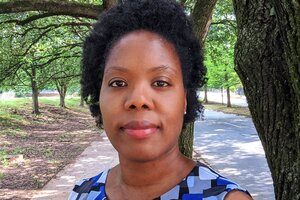
A design scholar, architect, artist, and founding Director of the Situated Computation + Design Lab at the University of Florida. Her research examines traditional and automated making cultures and practices, interdisciplinary creativity, and their intersections with society. Dr. Noel’s work in design and computation has been supported by the Graham Foundation for Advanced Studies in the Fine Arts, the Mozilla Foundation, and ideas2innovation (i2i), among others. Her TEDx Talk is titled, “The Power of Making: Craft, Computation, and Carnival.” Dr. Noel holds a Ph.D. from Penn State University, a Master of Science from MIT, a BArch. from Howard University, and a Diploma in Civil Engineering from Trinidad & Tobago. She has been a researcher and educator at Georgia Tech., Penn State, the Singapore University of Technology & Design, and MIT, and has practiced as an architect in the US, India, and Trinidad & Tobago.
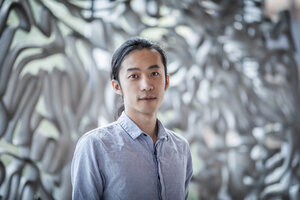
An architect, designer, and computer scientist based in Zurich, Switzerland. He is a researcher at ETH Zurich, where he focuses on optimization-based methods for computational robotic fabrication. His featured work “Stylized Robotic Sculpting” developed a novel design and robotic fabrication system for carving clay sculptures with robots. Zhao received a Master of Architecture degree and a Master of Engineering (Structural) degree from Massachusetts Institute of Technology (MIT) in 2017. He obtained his PhD at ETH Zurich, where he conducted cross-discipline research shared with Gramazio Kohler Research (ETHZ), Computational Robotics Lab (ETHZ), and Disney Research Zurich. Zhao seeks to bridge fields of the design, engineering, and computational fabrication through cross-disciplinary collaborations. His work has featured in various awards and patents across disciplines including architecture, landscape, and computational design.
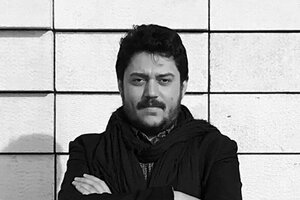
A practicing architect, researcher, and educator specializing
in computational design and architectural robotics. He holds a doctorate from TU
Delft, where he has been a senior researcher and the manager at the robotic building
lab of Hyperbody Group in AE+T at BK-City. He is the founder of SETUParchitecture,
an award-winning studio that aims at adapting digital design-to-production
technologies to geo-cultural specificities. He has led and taught numerous studios
at TU Delft and Dessau Institute of Architecture (DIA) at Bauhaus, where he has been
the director of DARS.hub [Design, Architectural Robotics & Systems], which
focuses on delivering interdisciplinary projects such as Bioplastic
Robotic-3D-Printing and Adaptive City Car sponsored by Audi.
Dr. Mostafavi’s
projects have been featured at international exhibitions, such as V2-gallery,
NAi-Rotterdam, and Paris’s Centre-Pompidou. He has received several awards, such as
Architizer A+ Awards 2020 and 2A Continental Euro-Asia Award 2018 in IAAC Barcelona
for Softstone Building. He is the author of the book titled Hybrid Intelligence in
Architectural Robotic Materialization (HI-ARM), which centers on integrated design
computation to robotic production of hybrid material systems using multi-mode
production methods. Lectured and published internationally, he has been a scientific
committee member of various journals and conferences.
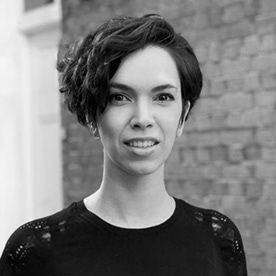
An interaction and spatial designer. My work sits at the intersection between humans and environments, physical and digital, sensuality and systems, textures and motions. The two intertwined pillars of my work are interaction and spatial design. On one hand, I explore interactions between people and environments through the design of physical and virtual immersive experiences. My latest piece, (un)Balance, was exhibited at Ars Electronica festival, Austria. On the other, I design spatial experiences for large spaces such as workplaces and hospitals. Through combinations of interiors, art installations and/or environment graphics, I infuse spaces with unique spatial identities while enhancing users experiences. My latest role was lead designer at Acrylicize, London based art & design studio. Motion and movement play key roles throughout my work. Wether in the form of motion graphics, kinetics or programmed light installations, they enable me to induce circulations, translate ideas and spark emotional responses. Today, I am looking at further layering my practices to envision new everyday interactions with emotional health and social equity in mind.
DigitalFUTURES Young Award 2020
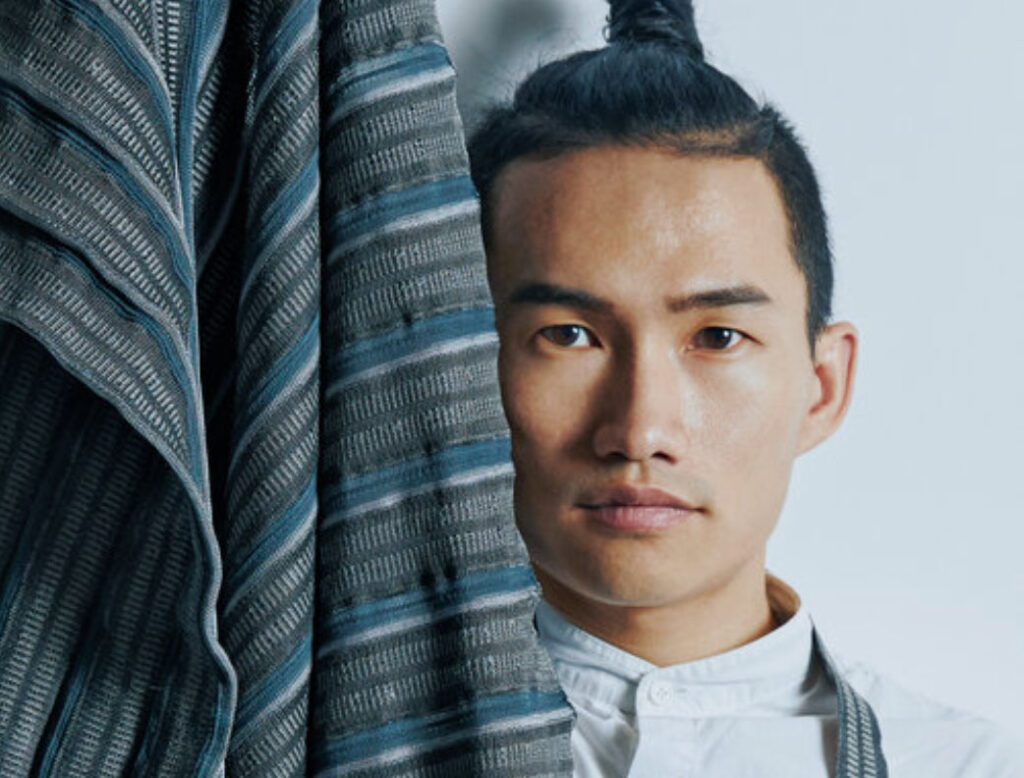
Dr. Jifei Ou
Jifei Ou is Founder/CEO at OPT Industries, Inc. and Research Affiliate at MIT Media Lab. He is a designer, researcher and entrepreneur based in Cambridge, MA, USA. He founded OPT Industries, which builds manufacturing processes for mass customization of functional materials. He is also a researcher at the MIT Media Lab, where he focuses on designing and fabricating transformable materials across scales (from μm to m). Jifei was born and raised in southwest China and has brought his design practice and scientific research to Asia, Europe and the U.S. His works have been published in academic conferences such as UIST (2013, 2016 & 2017), TEI (2014 & 2016) and CHI (2015 & 2016); awarded by design competitions such as FastCo’s Innovation By Design Award (2017, 2018), A’ Design Award (2016, 2017), IXDA award (2016), etc. He is also deeply involved in the manufacturing community in Shenzhen in order to facilitate the rapid scaling of his research.
Jifei holds a PhD and an MS from the MIT Media Lab, and a Diplom in Design from the Offenbach University of Art and Design in Germany.

A post-doctoral researcher at the Block Research Group (BRG) at the Institute of Technology in Architecture at ETH Zurich, involved in the NCCR Digital Fabrication. Popescu is an architect with a strong interest in innovative ways of approaching the fabrication process and use of materials. She studied architecture at the Delft University of Technology, before obtaining her PhD at the BRG in 2019. Her research focuses on the development of KnitCrete, a novel, material-saving, labourreducing, cost-effective formwork system for casting of doubly-curved geometries in concrete using 3D knitting. She is the main author of the award-winning KnitCandela shell and has been included in the MIT Technology Review Innovator Under 35 list in 2019.
An architect, researcher, and artist working in the field of computational design and digital fabrication. Her work lies at the intersection of architecture and robotics, producing spaces and robotic systems that can construct themselves and change in real-time. Such architectural productions include the development of hardware and software solutions, as well as complementing architectural and material systems in order to offer new design spaces.
Maria’s practice focuses on designing machines that make architecture: a practice that she broadly describes as Designing [with] Machines (D[w]M). D[w]M aims to investigate and establish design methodologies that consider robotic hardware development as part of the overall design process and its output. Through this work, Maria argues for a design practice that moves beyond the design of objects towards the design of technologies and processes that enable new ways of both creating and interacting with architectural spaces.